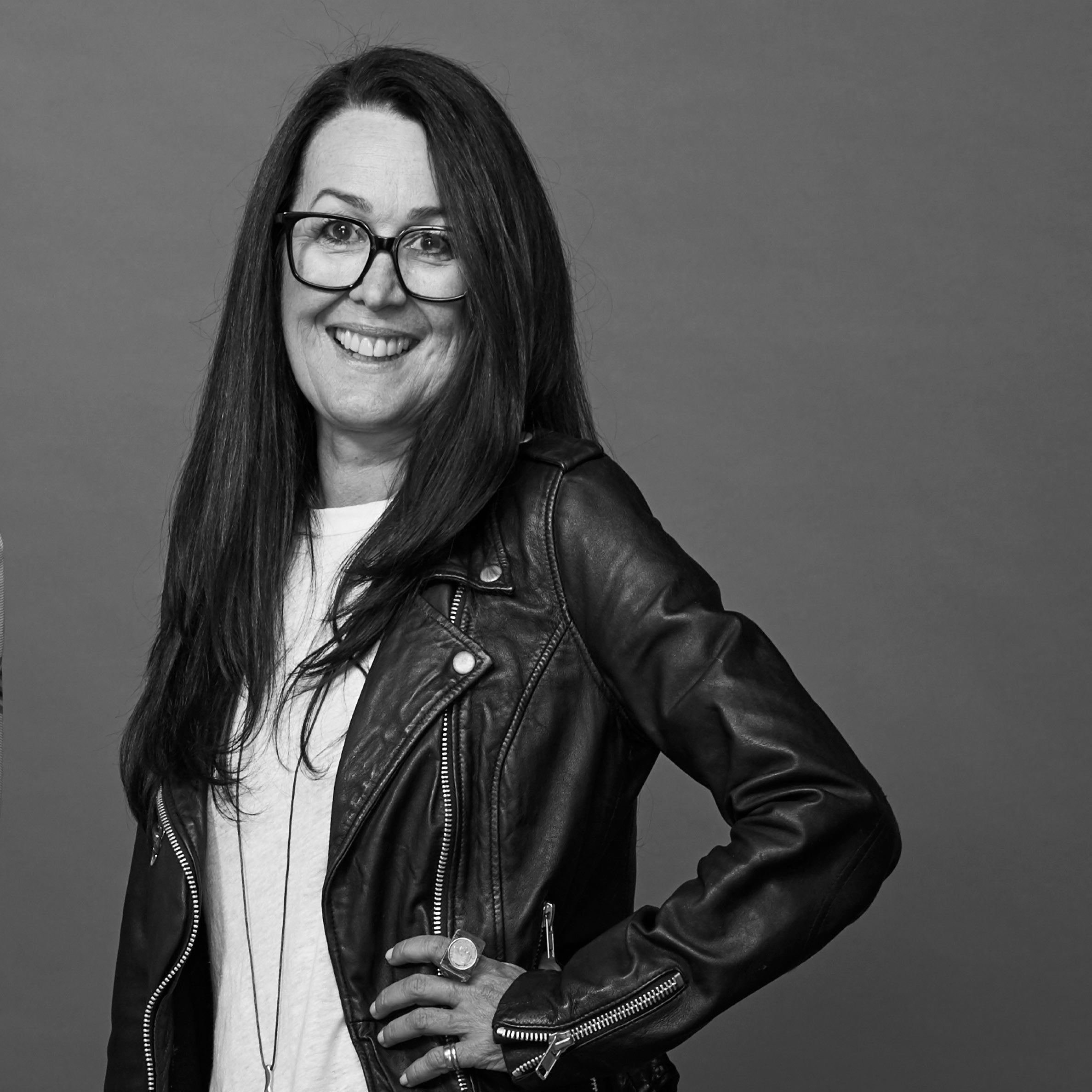In conjunction with our Cult Design Icons exhibition, we invited Anne-Maree Sargeant, Director of the Authentic Design Alliance, to write a feature article exploring design theft issues in Australia and why supporting original, authentic design is important.
Classic designs or icons are markers of excellence that have ongoing cultural significance. Traversing modernism, mid-century modern and the radical design ethos of the '60s and '70s, by late last century, contemporary furniture design had mainstream appeal, fuelled by the popularity of famous pieces.
With that came the term ‘designer furniture.' And inevitably, the best of the best, 'icons' - functional art pieces with cultural currency.
So, what makes an icon? If these coveted designs are so popular, why are they so expensive? And why should we invest in originals?


Design advocate, journalist, speaker and curator, Anne-Maree Sargeant was part of the team that founded the Space Furniture network and ran NSW for over a decade.
Former editor-of-large of Belle Magazine and design editor of INSIDE Out, she has helmed the Authentic Design Alliance since 2016, a social enterprise leading Australia's fight against furniture design theft. AMS presents the DESIGN-MADE. Podcast (launching March 2023), and heads up a gender equity mentor program for Design Fringe.
In 1992 I was lucky to preview a magical showcase by Cappellini, one of my top five Milan experiences of all time, when Marc Newson and Tom Dixon made their global debut. Giulio Cappellini was one of the first Italian creative directors to work with international designers, licensing early creations by Newson and Dixon, launching Wood Chair (1988/1992) and S-Chair (1987/1992) at that memorable installation.
Licensing formalises the legal right for a company to produce a design. It authenticates the creator has permitted their work to be made by the brand.
After extensive experimentation, Newson self-produced the first Wood Chair series in Australia in 1987. Once Cappellini assumed production, that testing began anew. Today, both chairs are part of museum design collections and are purchased by design lovers worldwide.
“There was an exhibition in Sydney of chairs designed in Australian wood. Every manufacturer I went with the prototype told me it was impossible to make, but I eventually tracked someone in Tasmania” - Marc Newson on his Wood Chair
MADE IN AUSTRALIA. A case study with Adam Goodrum
Fast forward twenty years to Adam Goodum and I discussing the need for Australians to understand that prices reflect the actual costs of commercialising a concept. That leap from sketch to finished product takes years, backed by an eyewatering amount of ingenuity, commitment and, mostly, cash!
The brief for the Molloy Chair (2014) included the need to be complex enough to not be easily copied; and that it would stand tall beside the best in European design. Typically a chair takes around two years to launch. Numerous iterations, refinements and prototypes before fabrication, experimentation, and testing even begin.
The Molloy chair and table are made using a 5-Axis CNC machine, sophisticated technology that can precisely cut timber forms in five different directions. These machines cost more than half a million dollars, and only a handful exist in NSW.
So run your hands over a Molloy Chair or Table with new respect and absorb that as you flip the price ticket. These are pieces made to be held by their owners for generations.


“Products are priced the way they are because that’s what it costs to produce them, there are so many contributing factors” - Adam Goodrum
Sustainable manufacturing involves using superior materials and non-toxic glues and finishes. These products can be repaired and restored if needed, or in the commercial furniture sector, have consideration for end of life-cycle, the result of a cradle-to-grave design process. Each of these elements come at a price.
Once finalised, there are marketing needs - photography, art direction and styling, catalogue design and print, digital assets, press information, trade fair launches, showroom displays, industry launches, training sales teams, samples and more. All contributing to what it costs to buy.
This is what Adam and I were discussing when it came to the cost of purchasing a well-made authentic design.

STOP DESIGN THEFT. What is the Authentic Design Alliance?
Cumulatively this story lays at the heart of why the Authentic Design Alliance (ADA) exists.
In 2010 Cult, Euroluce, Living Edge, Stylecraft and Ke-Zu founded the ADA to combat the influx of cheap replica products. Counterfeit products trading off famous designs to sell copies of originals. Initially this was twentieth century icons. Very soon this also included knockoffs of products by Australian designers.
In 2015 I took the helm, and after 12 months of research, we relaunched in 2016 as a Social Enterprise with a new team and remit.
ADA 2.0 exists for two reasons. To educate about the importance of investing in original products to support the future growth of the furnishing sector (local and imported); and to advocate for improved Government protection. Ultimately, our aim is that copying original designs will become illegal as it is in Europe and other territories.
Criminalising knock-offs is our long game and a conversation for another time (read our outcomes on page 4 of our latest newspaper). It's taken six years for the first round of legislation to be ratified. The introduction of a 'grace period' was legislated in March 2022, and further IP improvements are due in the next two to four years. Changing a law is far easier said than done.
The explosion of the replica market (currently legal in Australia) has seen the sea of knock-offs and copies become cheaper and cheaper. Karen McCartney told our Productivity Commission submission in 2018 that, "it's a race to the bottom with price."
The fast furniture industry has become an environmental disaster and is one of the major contributors to landfill in Australia, the USA and UK. Two million Sydney households discard an estimated 50,000 tonnes of furniture on pavements every year. That’s around 800,000 three-seater sofas, 1.7 million dining tables, 3.5 million coffee tables or 7 million chairs! Like ‘fast fashion,’ ‘fast furniture’ is also killing the planet.
New audiences informed by Pinterest boards, Instagram likes, and online searches need help understanding authentic and iconic designs' history, innovation and cultural contribution. There are almost 15 million hashtags for #furnituredupes on TikTok, and #replicafurniture hovers around 180k! In a way, our work at the ADA is only beginning, once again.
Next time you’re considering investing in designer products, ask yourself this: Does this product mean something to me? Will I value and care for it? And if it's time to pass it on for some reason, can it be repaired or resold? Will someone want it? Or will it end up on the pavement for rubbish collection?
Supporting the knock-off industry is supporting design theft. Collectively we have a responsibility to continue to support culture, design and the environment. As we say - get real, don't be fake!

The Authentic Design Alliance is a social enterprise leading the fight against furniture design theft in Australia and actively working with government agencies. Creating awareness about the damage caused by the fast furniture industry, the ADA educates about why we must invest in the people and brands that design, make, sell and promote original products. The ADA works to change intellectual property legislation to further protect products from being copied. The long-term vision is to see the replica industry criminalised in line with Europe and the UK.
authenticdesignalliance.org
@authentic_design_alliance
Visit the Cult Design Icons exhibition.
This February, Cult celebrates 25 years as the home of original design icons with a brand-new exhibition titled Cult Design Icons.
Taking place in a gallery space adjoining the Cult Flagship Showroom in Sydney’s Chippendale from 17 February until 01 March, this group exhibition showcases 25 design icons curated by 25 leading Australian creatives who have played a significant role in Cult’s 25-year journey.




